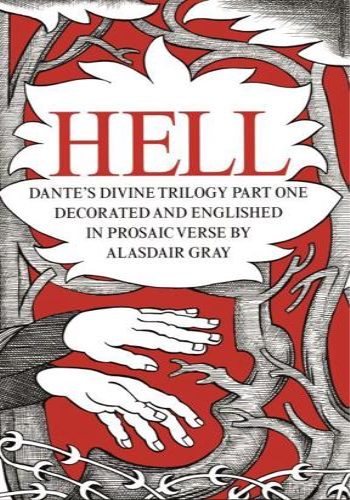Chapter 1: The Dark Wood - Dante, the main character of the Divine Comedy, finds himself in a dark wood, symbolizing his state of being lost in sin. He is struggling to find his way out, when suddenly, he sees the sun shining through the trees and attempts to climb a nearby mountain to escape. However, he is hindered by a fierce leopard, symbolizing his inability to overcome his sins.
Real Example: The Dark Wood can be seen as a metaphor for a person's spiritual journey. Like Dante, we may find ourselves lost in sin and unable to find our way out. The leopard can symbolize different obstacles in our lives that prevent us from growing spiritually, such as addictions, prejudices, or past traumas.
Chapter 2: The Gate of Hell - After being unable to escape the Dark Wood, Dante is confronted by the spirit of the ancient Roman poet Virgil, who tells him that he has been sent by Beatrice, Dante's beloved, to guide him through the underworld. They reach the gates of Hell, where Dante reads the inscription "Abandon all hope, ye who enter here."
Real Example: The Gate of Hell represents the entrance to the realm of sin and punishment. In our own lives, we may encounter moments where we feel like we have hit rock bottom or have lost all hope. However, as in Dante's case, there may be someone or something that guides us through these moments and leads us towards redemption.
Chapter 3: The Vestibule of Hell - In this chapter, Dante and Virgil enter the Vestibule of Hell, where the souls who were neutral in life reside. These souls, who neither chose good nor evil, are now eternally doomed to chase a blank banner, symbolizing their meaningless existence.
Real Example: The Vestibule of Hell can be seen as a representation of people who live their lives without a sense of purpose or values. They are neither good nor evil, but their lack of action and decision-making leads to feelings of emptiness and a wasted life.
Chapter 4: The First Circle: Limbo - As Dante and Virgil proceed through the first circle of Hell, they encounter the souls of the unbaptized and virtuous pagans, including famous figures such as Homer, Plato, and Julius Caesar. These souls are not punished like the other sinners, but they are still deprived of the bliss of Heaven.
Real Example: Limbo can represent a state of being for those who are unaware or ignorant of the teachings of a certain religion or faith. These individuals may have lived honorable lives, but they lack the knowledge and belief in God, depriving them of eternal joy in the afterlife.
Chapter 5: The Second Circle: The Lustful - Dante and Virgil reach the second circle of Hell, where they encounter the souls of those who were overcome by lust in life. The souls in this circle are punished by being constantly blown around by strong winds, symbolizing their inability to control their passions.
Real Example: The second circle can represent individuals who were consumed by their desires and addictions in life. These individuals are unable to find peace and are constantly struggling to control their impulses, leading to a chaotic existence.
Overall, Part One of the Divine Comedy, Hell, vividly portrays the consequences of our actions and choices in life. It serves as a cautionary tale, showing the consequences of committing sins and failing to live a purposeful and virtuous life.







